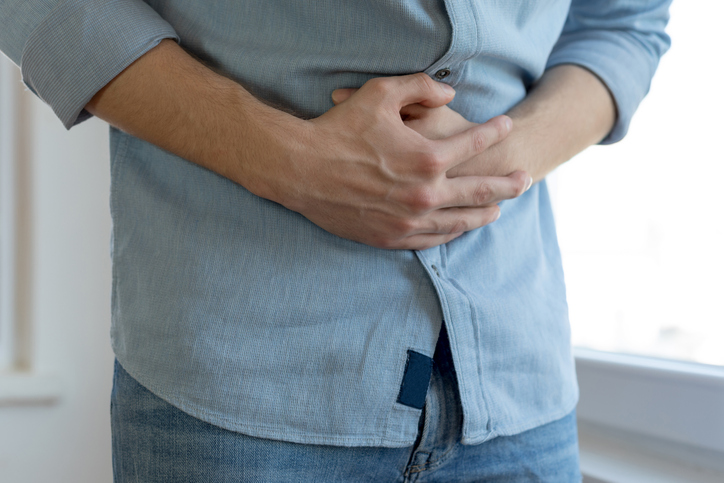Pain
Non-Menstrual Pelvic Pain in Women

Pelvic pain is a broad term used to describe pain felt below the belly button and above the legs. While menstrual pain in the pelvic area is common in women of child-bearing age, pain located in this region can also indicate the presence of other medical conditions. Pelvic pain can be acute (sudden and severe) or chronic (intermittent or constant and long- lasting) and can occur for no known reason. Chronic pelvic pain is diagnosed when pelvic pain lasts longer than six months. Pelvic pain that is not relieved during menstruation should be evaluated by a physician. To determine the cause of pelvic pain, diagnostic tests may be ordered including, but not limited to, ultrasound, blood testing, CT scan, MRI, X-ray, laparoscopic surgery or colonoscopy.
Pelvic pain causes
- Irritable bowel syndrome (IBS) can cause abdominal pain, cramps, bloating, diarrhea and/or constipation. Treatment includes diet changes and medications.
- Urinary tract infection (UTI) can develop when bacteria enter the urinary tract. Symptoms include frequent urination, sensations of a full bladder after urination, fever, nausea, vomiting and pelvic pain. A UTI can spread to the kidneys causing a serious infection.
- Interstitial cystitis (IC) is caused by inflammation of the bladder. Symptoms include frequent urination, bladder pressure, painful urination and painful intercourse.
- Appendicitis normally presents as a sharp pain in the lower right abdominal area and is often accompanied by vomiting and fever. Emergency treatment is essential as appendicitis can lead to the burst appendix which can quickly spread infection throughout the body.
- Kidney stones develop when salts and minerals, normally eliminated during urination, becoming wedged in the bladder, a kidney or the urinary tract. Pelvic pain is usually severe, and urine may include blood. Medical treatment should be sought if a kidney stone is suspected.
- Ovarian cysts develop when a follicle fails to open to release an egg; this causes the follicle to fill with fluid and swell. Although ovarian cysts normally dissipate on their own, they can cause pelvic pain, pressure, swelling and bloating. If an ovarian cyst bursts or twists, sudden and severe pain may occur.
- Uterine fibroids are noncancerous tumors that grow on the wall of the uterus. Symptoms include abdominal pressure, lower back pain, heavy periods, painful intercourse or infertility.
- Endometriosis occurs when uterine tissue grows outside the uterus in other parts of the body including, but not limited to, the ovaries, Fallopian tubes, bladder or intestines. Pelvic pain and infertility are common symptoms.
- Mittelschmerz or Painful Ovulation may occur during ovulation, midway through the monthly cycle. The ovary releases an egg along with fluid and blood that can cause irritation. Pain can occur on either side of the abdomen and may switch sides.
- Pelvic congestion syndrome occurs when blood recedes in the veins of the abdominal area causing swelling and pain. Pain often eases when lying down and increases when standing or sitting upright.
- Pelvic inflammatory disease (PID) is a major cause of infertility in women. Complications of sexually transmitted diseases cause PID. Symptoms include pelvic pain, fever, vaginal discharge, painful intercourse and painful urination. In severe cases, damage may occur to the uterus, ovaries or Fallopian tubes. Antibiotics are commonly used as treatment.
- Sexually transmitted diseases (STDs), such as chlamydia or gonorrhea, can cause pain during urination. Other symptoms include pelvic pain, vaginal discharge and bleeding between periods.
- Inflammation of nerves located in the pelvic area can cause pain and may be the result of an injury.
- Pelvic organ prolapse occurs when the bladder or uterus drops to a lower position in the abdominal area. Pressure is often experienced against the vaginal wall causing pelvic pain.
- Miscarriage can cause pelvic and abdominal cramping and pain. If pregnancy is suspected, emergency treatment should be sought.
- Ectopic pregnancy develops when an embryo implants in the Fallopian tubes as opposed to the uterus. Symptoms include sharp pain, vaginal bleeding, nausea or dizziness. Medical treatment should be sought immediately if an ectopic pregnancy is suspected.
- Painful intercourse may be caused by vaginal dryness or infections. A health care provider can help determine the cause and possible treatment options.
- Cancers of the reproductive tract may cause pelvic pain. Symptoms include, but are not limited to, bloating, weight loss, bleeding between periods and bleeding after menopause.
- Surgery performed in the abdominal area can cause pain or infection. Scar tissue and adhesions often forms inside the body after surgery and can cause organs to become fused resulting in pelvic pain.
- Chronic pelvic pain is diagnosed when pelvic pain lasts longer than six months. Chronic pelvic pain can interfere with everyday activities.





